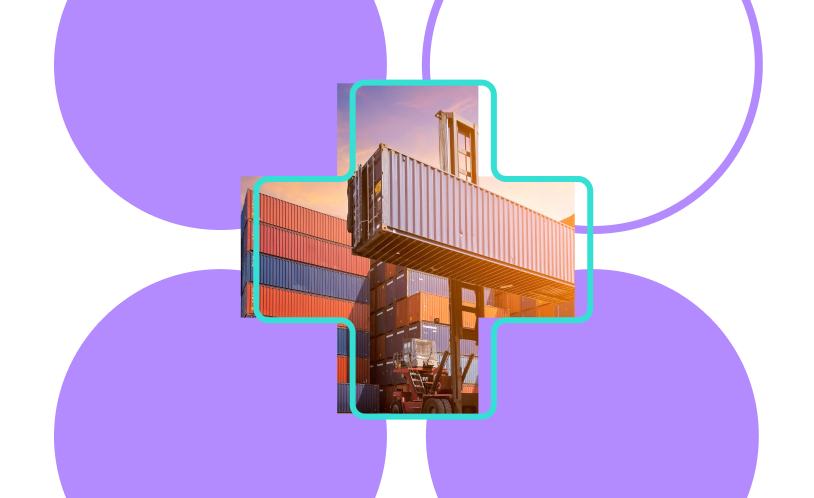The differences between air and ocean freight might seem obvious, but for importers and exporters, it’s important to get a deeper understanding. Our guide to shipping air or ocean freight will highlight the pros and cons of each mode so you can choose the best one for your freight.

Air vs. Ocean Freight during COVID-19
COVID-19 has presented numerous challenges to importers and exporters, including rate fluctuations, very limited capacity, and long delays. With all this uncertainty, you might be wondering which mode to choose for your next freight shipment.
Already picked a mode?
Should I ship air or ocean during COVID-19?
The choice between air and ocean normally depends on your shipment’s size, weight, and contents – and how fast you need your goods.
Under normal conditions, shipping air for small shipments often makes a lot of sense. It may cost more – for example, an 85 kg shipment might cost $400 by LCL and $600 by air – but your goods will arrive within days rather than weeks. For goods such as retail, where quick turnover is key, or electronics, which benefits from air freight’s heightened security, air is usually the right choice.
Currently, all freight prices, including air freight prices are much more expensive than normal, due to a range of factors. Nevertheless, airlines are flying, and even augmenting cargo plans with passenger planes. So if your transit time or another factor demands it, you can still ship by air.
Just like during non-pandemic times, ocean freight is typically far cheaper, especially for larger shipments. If you have time to wait for your goods, try to ship by ocean when possible.
Read on for more information on choosing between ocean and air freight.
Air Freight vs Sea Freight Cost
To calculate the cost difference between shipping via air freight vs. via sea freight, head over to Freightos.com to get live Quotes from vetted logistics providers. Once you have a better idea of the differences, consider the other factors discussed in this guide and decide what mode is best for your shipment.
Air vs Ocean Freight Comparison
Air Freight
- Air freight is best used when the cost of shipping is less than 15-20% of the value of the goods. For light shipments, use this chargeable weight calculator to work out whether your shipment will be charged by actual weight or dimensional weight.
- Air freight is faster, safer and more reliable than ocean freight, but it’s also more expensive – a $195 ocean shipment can cost $1,000 by air. Learn more about air freight pricing here.
- Airlines also have stricter regulations when it comes to shipping hazardous materials. Refer below and discuss with your forwarder.
Ocean Freight
- Ocean freight offers more capacity and value – one container can hold 10,000 beer bottles!
- Ocean freight is usually much slower than air, and customs issues and port holdups can cause additional delay. Express LCL is increasingly available on more routes and by more forwarders, often guarantees a delivery date, and is faster than regular ocean freight.
- Ocean freight has a much better carbon footprint than air freight.
Air Freight Restrictions for Hazardous Goods
There is a long list of prohibited items for air freight and it varies by national law and airline regulations. With less obvious examples in brackets, these prohibited items include:
- gases (e.g. lamp bulbs)
- all things flammable (e.g. perfume)
- toxic or corrosive items (e.g. batteries)
- magnetic substances (e.g. speakers)
- public health risks (e.g. untanned hides)
- oxidizers and biochemical products (e.g. chemical medicines)
- anything with a danger sign on the packaging.
If you are considering air cargo, you should carefully discuss the nature of your cargo with your freight forwarder. And don’t forget to mention ancillary items like handles.
Packaging can also be subject to restrictions. For instance, there is a maximum weight restriction to corrugated fibreboard boxes.
For further information check out the Freightos Hazardous Material Table.
Air Shipping vs Sea Shipping Transit Time
Until recently, smaller shipments that don’t fill a container (LCL) regularly took much longer to ship than full container (FCL) shipments. Shippers wanting smaller quantities reasonably soon had to pay a premium to go air freight.
But, there are now ocean LCL services which can compete with air freight for time and are a lot cheaper. This is due to several reasons, including ships are getting faster, canal upgrades cutting delays on some routes, improvements to ocean tracking, and a much more competitive freight market.
Some forwarders are now providing express ocean services, sometimes called Expedited LCL, with guaranteed delivery days, actually faster than FCL, and close to matching air transit times. Most air cargo is typically consolidated, but it takes time to put together, and dedicated services are typically once or twice a week. So, transit times are usually 5-7 days. Compare this with some express LCL shipments. For instance, Europe to the East Coast can take as little as 8 days – but it’s important to note that with current conditions this can be much longer.
So air vs ocean freight now? These services suit high-value products, with a critical, but not immediate, due date. It also works well for products with a short shelf life, but longer than a couple of weeks.
Air Freight vs Sea Freight Carbon Footprint
International bodies, governments, and individuals are increasingly taking responsibility for their impact on the environment. Even smaller businesses are considering how they contribute to a more sustainable future. This will increasingly have a business impact too: not having green credentials will lose business.
So does sea freight or air freight leave a bigger carbon footprint on the environment?
CO2 emissions from ocean freight are minuscule compared with air freight. Even withstanding some concerns about measurement, ocean freight has a much smaller carbon footprint.
These guidelines should help when you get to the air vs ocean freight decision.
If you are an importer or exporter booking freight quotes on the Freightos.com, the guidelines are even simpler. By selecting locations rather than ports when moving boxes or pallets, Freightos.com will automatically select the quickest or cheapest routes, irrespective of mode.



